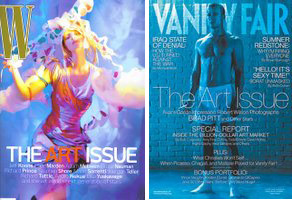In the current issue of the New Yorker, there is a profile of the legendary 96-year-old architectural photographer Julius Shulman. The article discusses Shulman’s disapproval of the way most architectural photographers only photograph empty buildings:
“Why is there such a fear of using people? Richard Neutra was always furious if I used people in pictures of his houses – he was afraid they would overpower the architecture. But my photographs show babies and cats and dogs and children. Why not? It makes it interesting to connect it with the life.”

Case Study House #21, 1958 by Julius Shulman
Fine art and documentary photographers often appropriate the techniques of architectural photography. Perhaps the most notable example in the fine art arena has been Andreas Gursky. I think Gursky is a great photographer (I sense a backlash against him amongst other photographers, but I think this is largely due to overexposure and outrageous auction prices).
I enjoy Gursky’s clinical, god’s eye view. And I like the work of his contemporaries Thomas Struth, Peter Bialobrzeski, Candida Höfer, etc (are they all German?). But a little goes a long way. After awhile I get hungry to see people in the pictures. Instead of Gursky’s iconic 99 cent II Diptychon (which recently sold at auction for 2.48 million… ironic), I might want to look at, say, Brian Ulrich:

Chicgo, IL by Brian Ulrich
Luc Delahaye is another photographer I greatly admire. He maintains Gursky’s god’s eye view, but the view often includes people. A few years ago Delahaye created controversy when he exhibited this image at the Ricco-Maresca gallery:

Taliban Soldier by Luc Delahaye
The controversy had to do with commercialism. The image was printed large and sold for approximately $15,000 (a drop in the Gursky bucket). Why are people so uncomfortable with this kind of photography depicting real life and real death? As Shulman asked, “Why is there such a fear of using people.”
Of course one of the other reasons that Delahaye got into trouble was because he was applying journalistic imagery to a fine-art context. But so what? Are we supposed to erase images of people to make photographs palatable for the art market? I suppose people are disturbed by the idea of, in the words of Shulman, ‘using people.’ It is disturbing. Photographs of people use people. It makes us uncomfortable. But it is also what makes the medium so potent.
I’ve been thinking about this issue in relation to the spate of fine-art images from Katrina: Robert Polidori, Chris Jordan, Katherine Wolkoff and others. I think these are all terrific photographers. And they’ve done admirable work. But after awhile I find the absence of people in the pictures a little frustrating.
Katrina is a good example of why I often defend the efforts of photojournalists. Certainly photojournalism has numerous faults, but I admire the attempt to connect the subject (in this case Katrina) to real people. Along with all of the images of destroyed homes, don’t we also need to see pictures like this:

15 days after Katrina hit New Orleans, Edgar Hollingsworth, 74, is rescued from his Broadmoor District home, photograph by Bruce Chambers/Orange County Register
“It makes it interesting to connect it with the life,” said Shulman. Of course! Architecture isn’t some frozen box, it is a home, a place where life is lived. While it is worthwhile to see the architectual devastation of New Orleans, I also want to see the people – the lives actually living in this mess.
Architect Richard Neutra was afraid that pictures with people would overpower the architecture. I sometime wonder if the contemporary art world is afraid that pictures with people will overpower the art.










You must be logged in to post a comment.